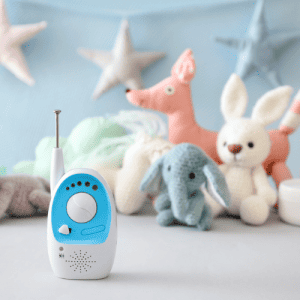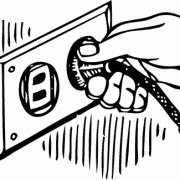EMF Questions and Answers with Margaret Glaser: Updated
 Our advisory board member Margaret Glaser, MA, served on the national EMR (Electromagnetic Radiation) Network board, which focused on a precautionary approach to wireless radiation. She also worked with an Underwriters Laboratories (UL) panel, with efforts to include human health as a factor in their voluntary Sustainability of Mobile Phones Standard criteria, as well as with the International Commission for Electromagnetic Safety. She has updated this article to include emerging approaches to EMF safety.
Our advisory board member Margaret Glaser, MA, served on the national EMR (Electromagnetic Radiation) Network board, which focused on a precautionary approach to wireless radiation. She also worked with an Underwriters Laboratories (UL) panel, with efforts to include human health as a factor in their voluntary Sustainability of Mobile Phones Standard criteria, as well as with the International Commission for Electromagnetic Safety. She has updated this article to include emerging approaches to EMF safety.
Latitudes: An ACN Latitudes reader asked, “Do you know how to find out about cell phone headset safety? I know all cell phone use is discouraged, but which is safer — the headset with a wire from the phone or a headset with wireless BlueTooth technology?”
Margaret Glaser:
There are several layers to this answer. First, you definitely should avoid putting a cell phone against your head. Most of the radiation from the phone goes into your head and body; a much smaller percentage actually connects to a cell tower.
Next up, wireless earbuds. They are better than nothing. They do still expose the head and brain to radiation, although it is somewhat reduced. They communicate with the cell phone itself rather than the cell tower. When used, it’s important to remove them after the call is finished. They should not be left in the ears when not in use.
Then there are wired headsets. These reduce the radiation exposure to the head even more than wireless earbuds. However, some radiation does still travel up the wire.
Another option that allows even less radiation to travel to the head is the air tube headset. It is like a wired headset, except that the last several inches of the headset leading to the ears are made of thin, hollow air tubes that do not conduct radiation up to the ear.
And finally, some headsets use a ferrite bead near the bottom of the headset wires. This can block the cell phone radiation from traveling up the wires to the ears, although the wires might still pick up other ambient radiation, based on comments I’ve read. I’m not yet well versed with this emerging approach.
Something to keep in mind is that the cell phone itself is still radiating as long as it is in operational or ready mode, so you want to keep it away from the body as much as possible, even if you are using the above mitigation devices.
It is best to keep your cell phone on a table, in a valise, purse, backpack, etc., and not near the body or in a pocket or bra. The reason for this is that cell phones in ready mode send frequent signals to nearby towers to communicate their position.
If you must carry a cell phone in your pocket, put it in airplane mode and check for calls or messages from time to time.
Latitudes: What about cordless phones and baby monitors?
Margaret Glaser:
 Modern cordless phones and their base stations emit radiation similar to cell phones, so their long-term effects are also of concern. The old, non-portable, wired phones are preferable. Scientists advise you not to keep a cell phone, cordless handset, or base beside your bed. Your body needs time to repair itself overnight.
Modern cordless phones and their base stations emit radiation similar to cell phones, so their long-term effects are also of concern. The old, non-portable, wired phones are preferable. Scientists advise you not to keep a cell phone, cordless handset, or base beside your bed. Your body needs time to repair itself overnight.
Importantly, if you are holding a baby or young child, do not use a cell or cordless phone. I’ve seen some moms hold the phone to their ear, close to their little one’s head. This is the second-hand “smoke” of radiation, something people may not consider. The same thing is true with tablets.
Tablets
Tablets are radiating when in use. You should avoid having your baby or young child positioned next to an operating tablet unless the material has been downloaded first and is played back while the tablet is no longer connected to the internet.
Baby Monitors
Baby monitors use wireless radiation to connect the baby to the parent for monitoring. While manufacturers advise placing the monitor no closer than 8 inches from the baby to stay within FCC exposure limits (which are far too lax), the fact is that this is still much too close to protect the child from radiation exposure. It is best to place such monitors as far from the child as possible while still allowing a signal. And parents should not carry the end of the monitor against their body.
More information
Learn additional tips on the safest use of wireless technology at The Baby Safe Project and Environmental Health Trust .
_______________________










Thank you for sharing information that identifies this as a REAL condition!
I noticed an immediate decline in my health about 18 years ago when wireless technology came into my family’s life. I kept blaming it on my husband’s “blinky things” (video game devices, etc.) but couldn’t conclusively say that my symptoms were caused from the electronics.
I grew up in the country in the 80s and 90s without electronics, other than a telephone with a cord, a family AM/FM radio that plugged in to the wall & a family TV with a cable box that was rarely on. I spent my childhood summers outside in the garden, 20 miles from a city.
I felt relaxed, healthy, peaceful & focused when I was home with my family in the country, where there were more cows than people.
I felt sick, exhausted, anxious & spaced-out when I was indoors at public school under the florescent lights with all the electronic equipment around, although I didnt know what was making me feel so bad.
I also felt this way if my parents
took me to the city for the day.
Interestingly, I did NOT feel this way in our school’s library full of books where there were NO electronics & the librarian kept the lighting dim. It’s the only place in school where I felt at ease.
I felt good if I could sit near an open window and the teacher kept the overhead lights off.
I could focus on reading for hours as a kid when I was at home, even though I often was a space cadet at school.
I eventually attributed my symptoms to social/general anxiety, lactose intolerance, allergies, and a variety of other things that didn’t make much sense because the symptoms would go away as soon as I left school or the city & returned home to the country.
I moved into an apartment in the suburbs when I was a young mother in my early 20s in college. I felt fine while at home, for the most part. The only wireless thing I owned was a cordless telephone & an emergency cellphone that I kept turned off unless I was traveling, but I always knew I felt my best while out in nature, so I frequently took my young children on long walks through state parks/trails/local forests.
Our apt was near a power plant, a small airport, a radio tower & a more densely populated area, which must have produced more EMFs than I was used to.
My husband introduced gaming consoles & associated wireless technology into our home/apt in 2007 and I haven’t slept the same since!
I didn’t realize the connection until years later, but that’s when my doctor begin to prescribe me ADHD medication to help with college.
We moved into our own house about 5 miles from our old apartment in 2010. It’s in a beautiful spot on a hill but near high tension wires, a petroleum pipeline, a radio tower, the police station with another huge radio tower…and let’s not forget the powerplant and airport, more densely populated area, and several big schools (all of which are LOADED with wireless technology. We are one mile from the highway department & across the street from an old dump — none of which are noticeable to the casual observer but exist, none-the-less.
It began to experience strange symptoms from the first day we moved in our house.
It took 10 years to realize that I never felt healthy & free unless I spent 6+ hours per day working outside in the yard. Perhaps I was naturally attempting to “ground” myself but didn’t realize it. There is research to support the benefits of “grounding” oneself.
I never slept well or felt relaxed in my own body unless the power went out! Anytime there is a power outage due to bad weather, it’s as if a HUGE weight is lifted from my shoulders. I take a big sigh of relief, and my body can finally relax and not feel so tense, as if it’s buzzing all the time. Not to mention all the other weird symptoms.
I realize that must sound strange. I didn’t want to believe it myself, which is probably why it took 10 years for me to finally accept the reality of what I was experiencing. I have a science degree and almost become a medical doctor. It hasn’t been easy for me to arrive at this conclusion.
I’ve considered EMF blocking paint. I sincerely feel as if we should move. The negative health effects of EMFs are quite obvious.
I avoided getting a smartphone for the longest time for different reasons. Within less than 2 years after I finally broke down and got a smart phone, my pretty piano fingers had become arthritic and developed gnarled arthritic bumps on my knuckles! I developed a lump in my breast on the side where I hold my phone while typing & developed precancerous lesions on my upper thighs, where my smartphone hovers as I type, while holding it above my lap.
I am thankful for the benefits of wireless technology, but I sincerely believe that it poses serious health risks to humanity at the rate in which most people in the western world are exposed to it. It feels as if there is no safe space to go to get away from it & rest & heal. It’s very sad because children are growing up this way & dont know any better. They don’t realize how beautiful life can be without it…or how truly healthy they can feel.
Two of my cousins in their early 30s developed stage 4 metastatic breast cancer at the same time after a couple years of carrying iPhones close to their bodies. It’s very sad that they are no longer with us.
I hope & pray that more research is done to expose the harmful effects of wireless technology on a large scale for the good of humanity.
Thank you so very much. Wishing everyone the best of health, always! 💕🙏🏽🕊️